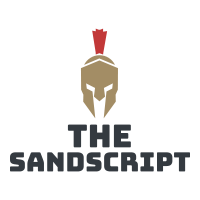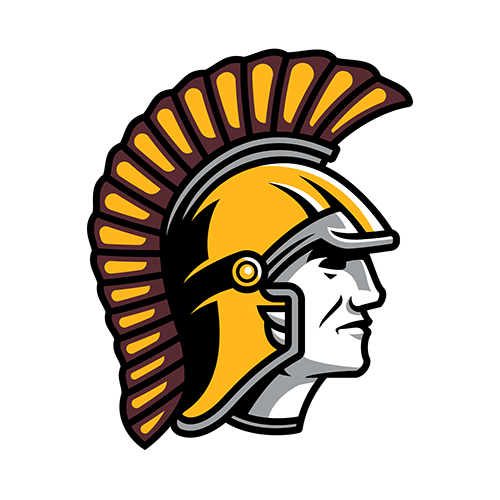Earn College Credit: Take AP, IB, and Dual Credit Courses
CHS continues to expand opportunities for students to earn college credit.

February 16, 2022
With the start of scheduling for the 2023 school year, the Sandscript wanted to provide a thorough explanation of the different advanced course pathways that students can take at CHS. Chesterton High School provides three different pathways to earn college credit: Advanced Placement, International Baccalaureate, and Dual Credit.
During their high school career, some students choose to take courses that will help them earn college credits before they apply to colleges. A huge reason why students take these courses in high school is because the course credit price is a lot cheaper. At a university, credit hours are incredibly expensive even with financial aid, so by taking these courses in high school, you are able to reduce the cost of your overall college education. Some students just want to get ahead in collegiate experience. Students that take these collegiate courses in high school are often able to graduate college early because they already have some of their required credits needed to graduate on time.
The Advanced Placement program, or “AP”, is a pathway students can take to earn college credit through the College Board, a non-profit organization that provides students with opportunities to get a head start on their college endeavors. This credit is earned by enrolling in an AP course and receiving a high enough score on the final exam, which is a standardized test given by the CollegeBoard. Each test is evaluated on a scale of one to five. In order to receive the credit hour at most universities, a student must earn a three or higher on the exam. Most colleges allow for AP credits to be transferred when a student graduates and they will be able to begin their college education with credit hours and the flexibility to take other classes that interest them without having to worry about some of the mandatory requirements held by the school.
When students take advanced classes, most understand that it is difficult to manage the time spent on the course and other priorities.
“What’s most difficult is getting time for yourself. With school activities and sports you go straight home to homework in more difficult classes. Finding that time for yourself to relax and destress is very difficult, especially during junior year when students normally take the most AP classes. In the long run it’s worth making your Junior year harder than your senior year, but it’s easy to overload yourself depending on the classes you chose,” says senior cheerleader Jessica Manojlovic.
CHS offers a wide variety of AP courses in almost every subject. Taking and passing these courses is crucial for students to avoid taking them again in their future education.
Like Advanced Placement courses, the Dual Credit program is another pathway for high school students to earn not only high school, but college credits. In some courses, the Dual Credit program falls hand in hand with the AP program. Some courses offered by CHS qualify as both Dual Credit and Advanced Placement courses, meaning you can still get college credit if you do not pass the AP exam. The majority of dual credit courses are run through Ivy Tech, with some being provided through Purdue Northwest (PNW), and allow high school students to earn college credits when they take a dual credit course. The term “dual credit” means that the student will earn credit for both the highschool and college level.
Separate from Advanced Placement and Dual Credit, the International Baccalaureate program, or “IB”, is a two-year collegiate program with a rigorous liberal arts curriculum that forces students to challenge themselves and helps them to become more academically independent. “Universally our graduates come back to tell us that they are way ahead of their peers because of the IB program. It’s proven to help students with time management skills and college level writing requirements,” says IB History teacher, Christopher Lowery.
The program involves both one-year and two-year courses that each have an exam and assignment at the end. Students taking IB at Chesterton High School are required to take three to four Higher Level (two-year) courses that lie within one of six academic areas provided by the program. The rest of a student’s schedule will consist of Standard Level (one-year) courses. In addition, IB students are required to take the course Theory of Knowledge (TOK) if they plan on earning the full IB diploma. Students who earn the IB diploma will also earn their Chesterton High School diploma at graduation.
Chesterton offers students the opportunity to join the IB Art program, which does not require students to complete the requirements for the full IB diploma. This course is treated as a separate course for students who are interested in pursuing art in their future education, but would not like to enroll in the full IB program. The art program gives students the opportunity to take a rigorous art course where they can be more creatively independent.
In evaluating whether or not to take IB, Lowery encourages students to ask themselves the question, do you want to learn?
“Too many students are looking to check off a box for their resume but IB gives students choice on what they learn so students really need to want to explore within their interests in that program,” Lowery states.
Even with the hard work and focus that the program takes, Lowery encourages students to consider it when deciding between their different pathways.
“It’s a ton of fun but it will challenge the student and obligates them to keep up on their work,” he says.
When considering to take any of these collegiate courses, many students question the cost of these courses when making their decision to take them. Dual credit courses often have different costs depending on who is running the course, however, students are able to discuss pricing with their counselors and find which classes would be the best fit. Each AP test costs approximately $95, however some of these exam costs are covered by school depending on which subject the course falls under.
Before you add these courses to your schedule, take a look at the course description book to find what courses are available. By fully reading the description of each course, students will be able to gain a further understanding of the requirements of each course and whether they would enjoy taking certain classes. Once students find courses that they are interested in, it is recommended to meet with their counselor to figure out which courses will be the best fit. Taking courses that you are interested in and possible classes you would need to take in college is the easiest way to narrow down the courses you should take in high school. If there are any additional questions about any of these pathways, the Sandscript encourages students to get into contact with their guidance counselors.




